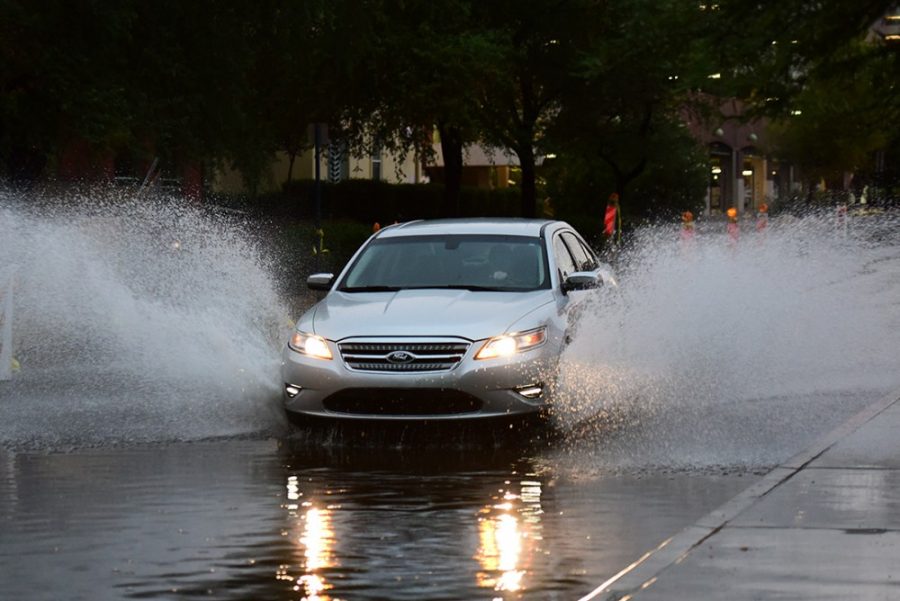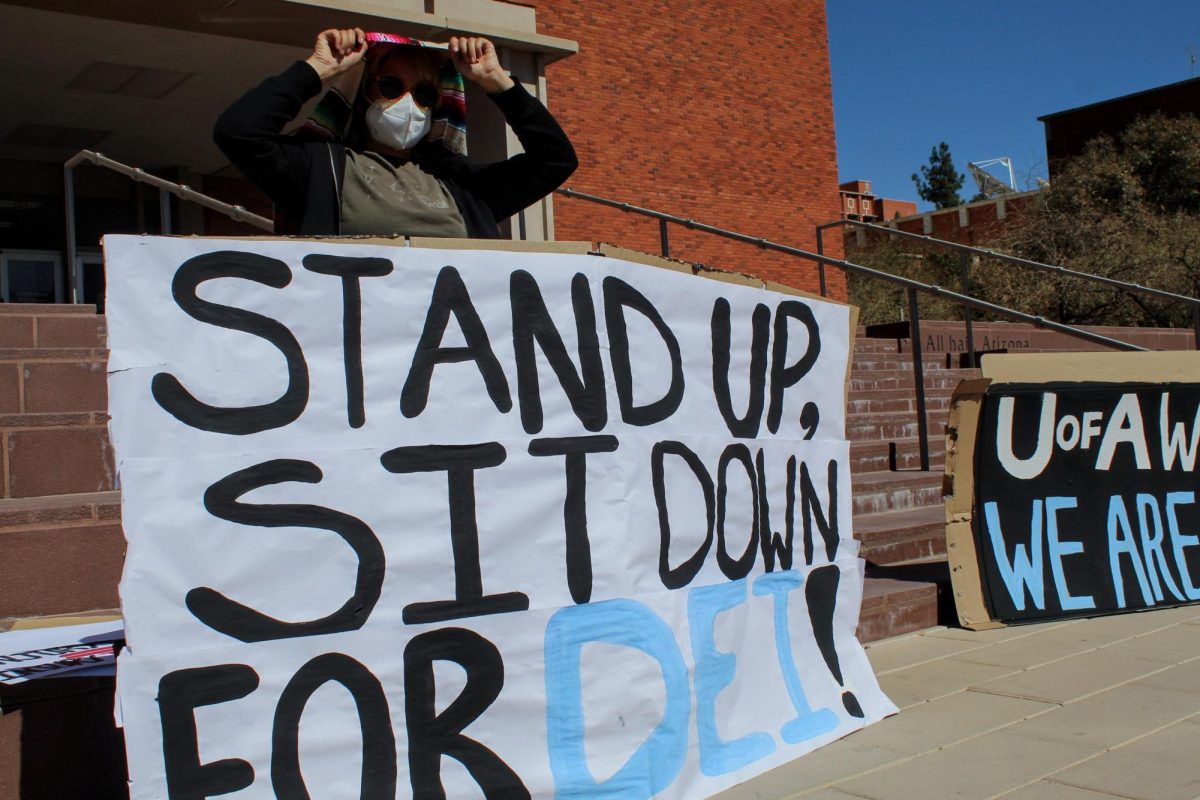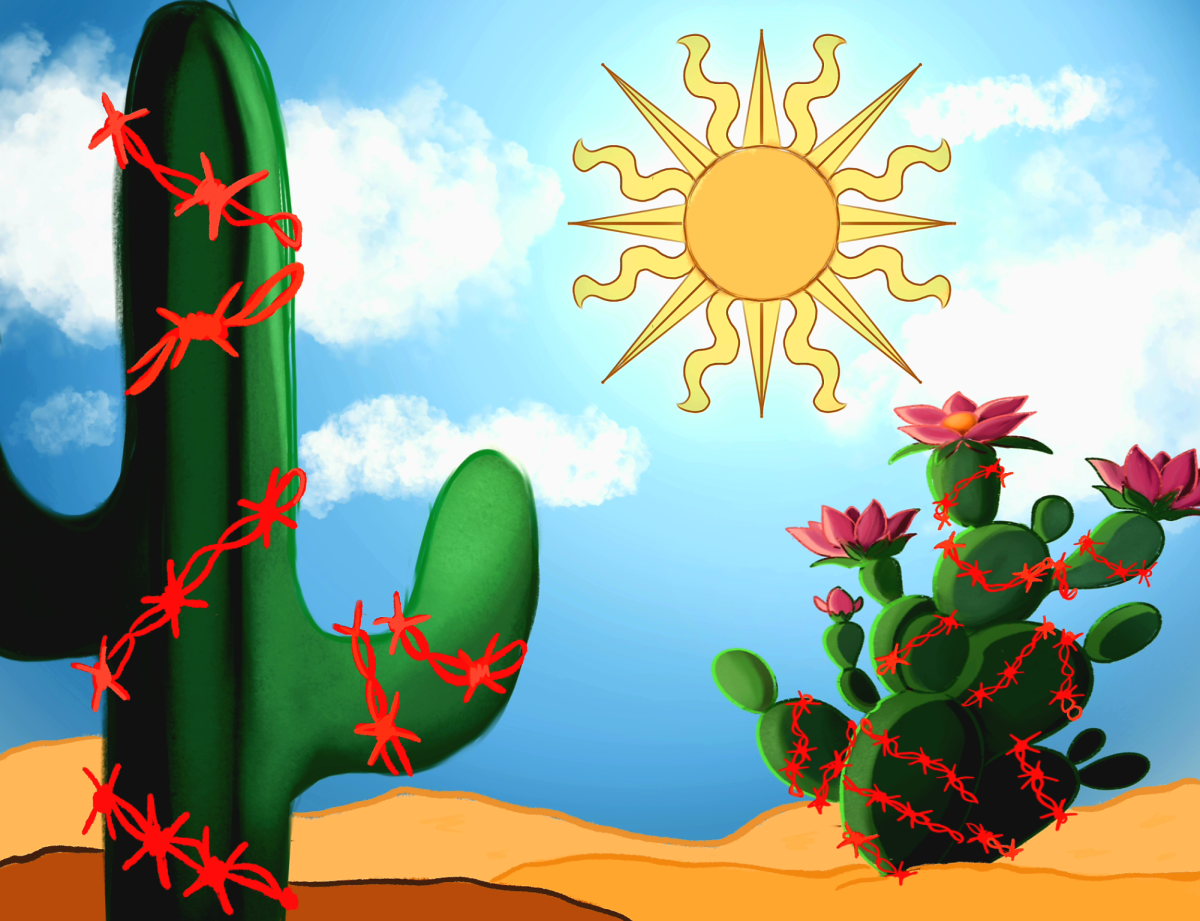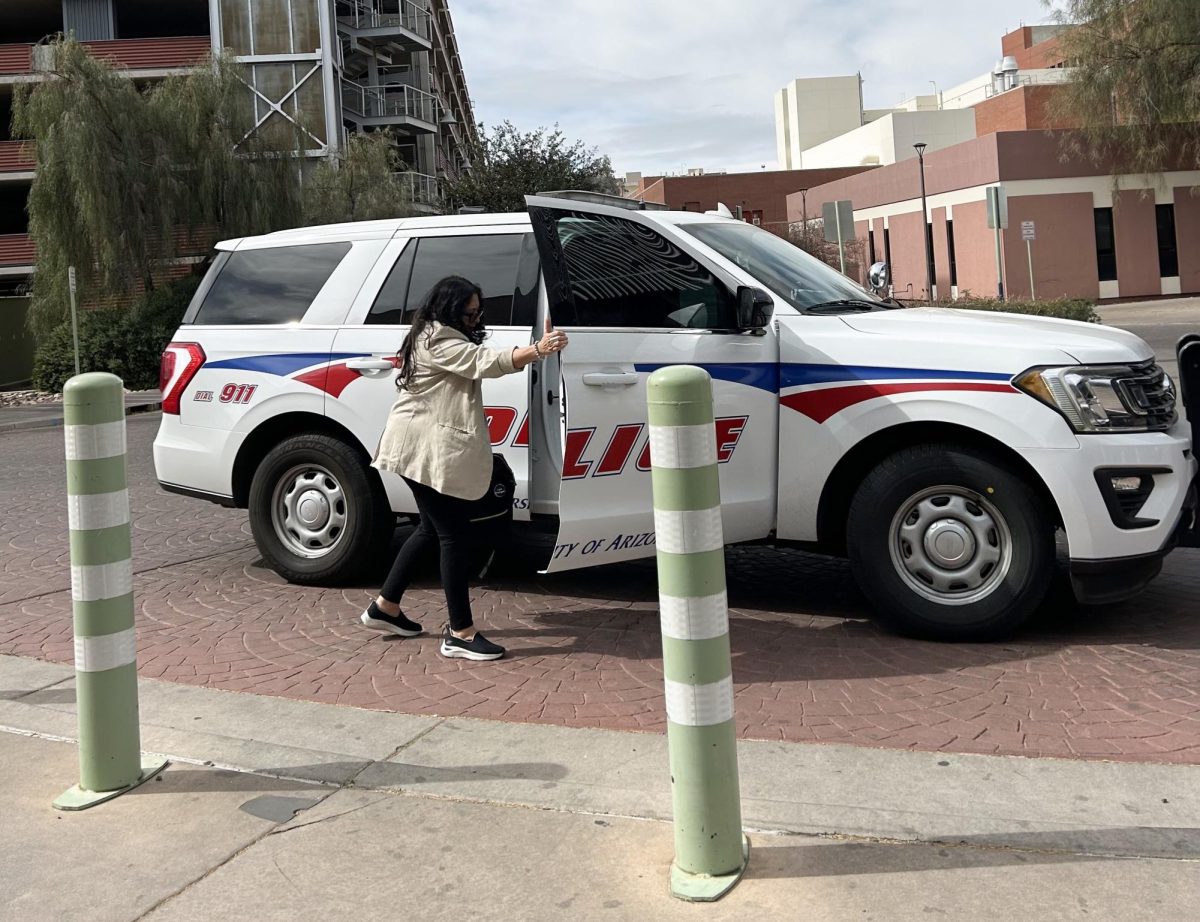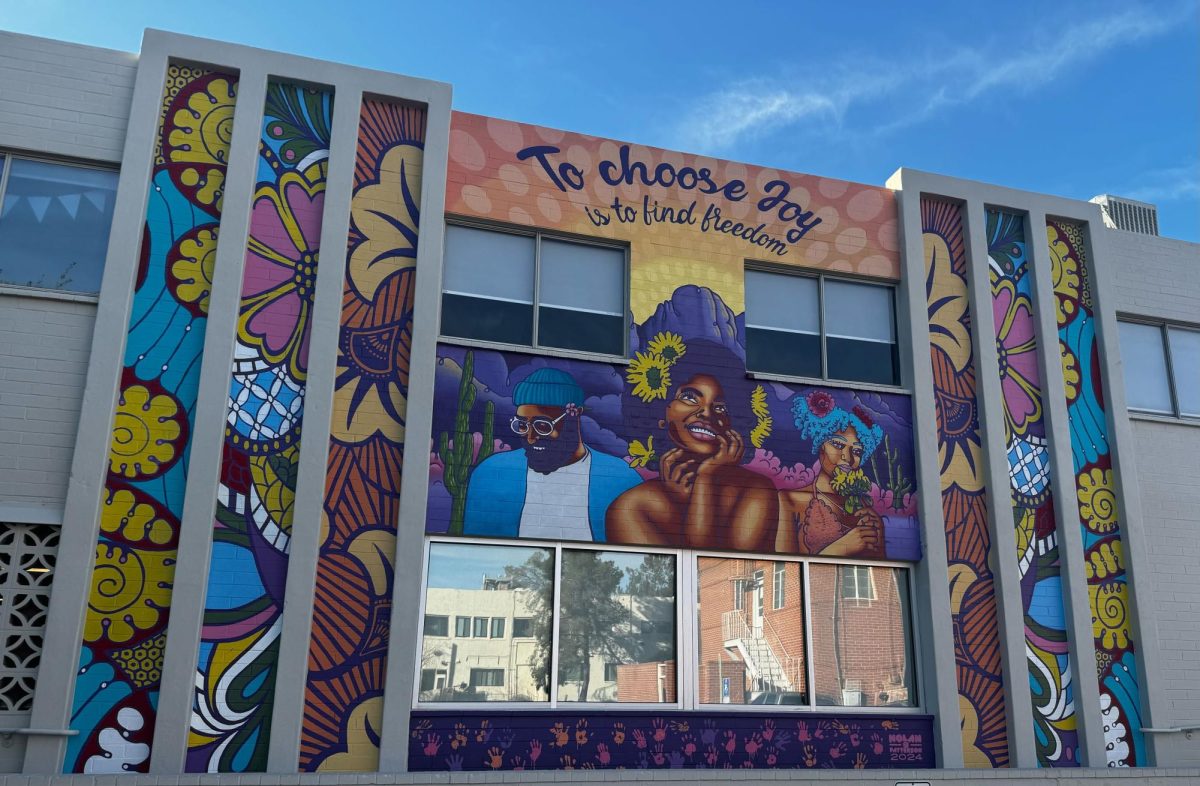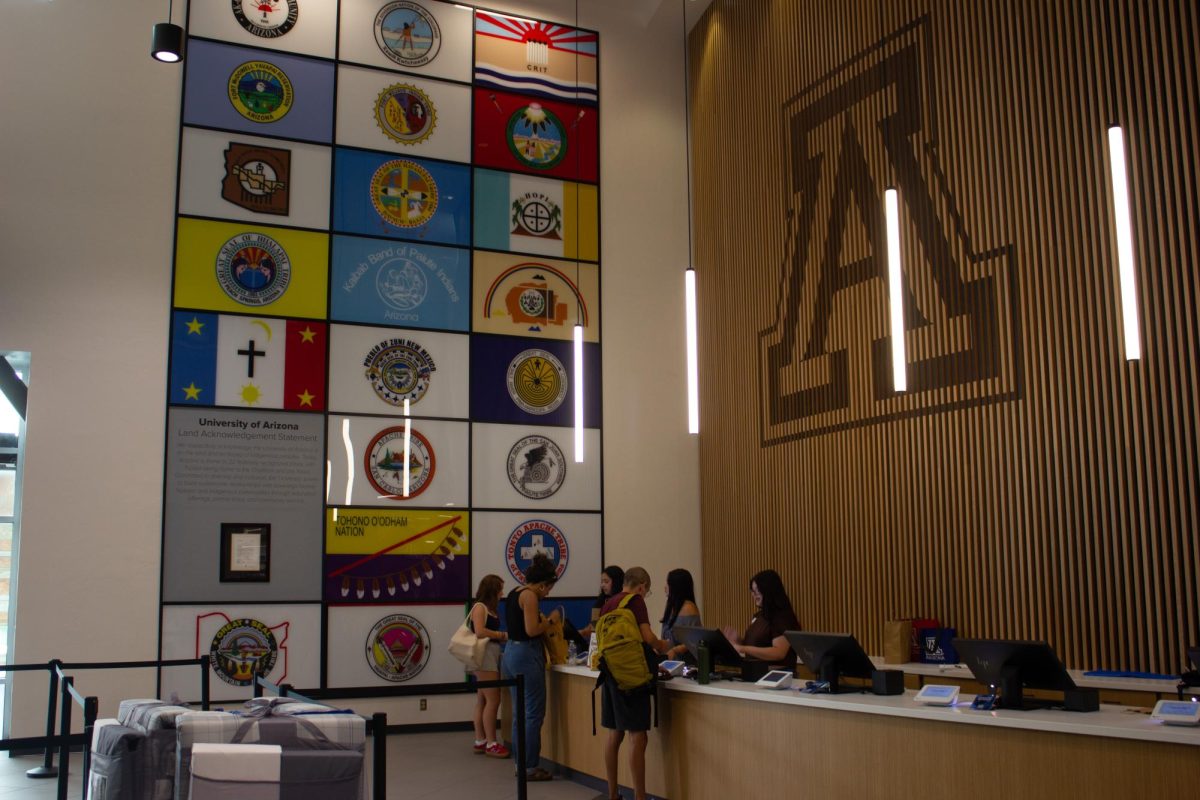Arizona’s monsoon season is known for bringing fantastic displays of lightning coupled with terrifying thunderstorms, sudden gusts of wind and occasional flooding of roadways and washes.
Behind these giant seasonal rain clouds are many moving components that power the storm cell starting at its origin often hundreds of miles away.
“Monsoon means the seasonal change of wind direction,” said Xubin Zeng, a UA professor of atmospheric sciences and the Agnese Nelms Haury chair in Environment and Social Justice.
Known as the North American Monsoon, the event occurs annually during the months of July through September. Pulling water vapor from the Gulf of California and the Gulf of Mexico, the monsoon’s circulation begins in Central America and moves north toward the American Southwest.
According to Zeng there are several circumstances that bring about a monsoon.
“There are three primary factors,” he said. “One is the temperature horizontal gradient, or the horizontal difference in temperature, between the ocean and the continent.”
This difference in temperature creates systems of high and low pressure.
“Then there must be deep convection, or heavy precipitation. That’s the only way the monsoon can move inland far away from the coast,” he added.
The final factor is the Earth’s rotation, which is related to the overall pattern of circulation in the atmosphere.
While these factors are not commonly observed with the naked eye, the side effects of monsoons can be seen throughout the city with heavy amounts of flooding in the streets.
“The university campus is right in the in the middle of the older part of Tucson,” said Herbert Wagner, the director of Occupational and Environment Health & Safety for the UA. “There were no sewer systems put in, so the city streets were basically the water conveyance for storm water.”
Tucson city streets were originally designed to fill with water that would then be transferred to washes, causing the flooding.
Even for technologies such as the Sun Link Tucson Modern Streetcar, designed to work in areas around the UA campus and downtown, flooding can be potentially hazardous.
“If the water gets high enough to where we can’t see the switches of the track, then we suspend the service until the water subsides,” said Steve Bethel, the streetcar’s general manager.
Yet, despite the impact Tucsonans may feel the monsoon season has upon their lives, residents often experience a yearly fluctuation in rainfall.
Since the state is far away from an ocean, rainfall can change substantially from year to year because Southern Arizona is not the core region of storm activity, Zeng noted.
The North American Monsoon is neither the strongest nor most well known. Other summer monsoons play a key role in the livelihood of many people who live in regions such as India and Southeast Asia.
A lack of rainfall can have dramatic impacts for these countries, since many rely on summer monsoons for both local industry and agriculture. However, too much rain or storm activity in such regions can also lead to significant damages, including loss of life and damage to public and private property.
When it comes to safety, no one is exempt.
“When the monsoon comes, there’s always the problem of potential lightning strikes,” Wagner said. “Getting indoors, getting where it’s dry and safe, pulling over if you’re driving and delaying your trip [are] the best [things] you can do.”



